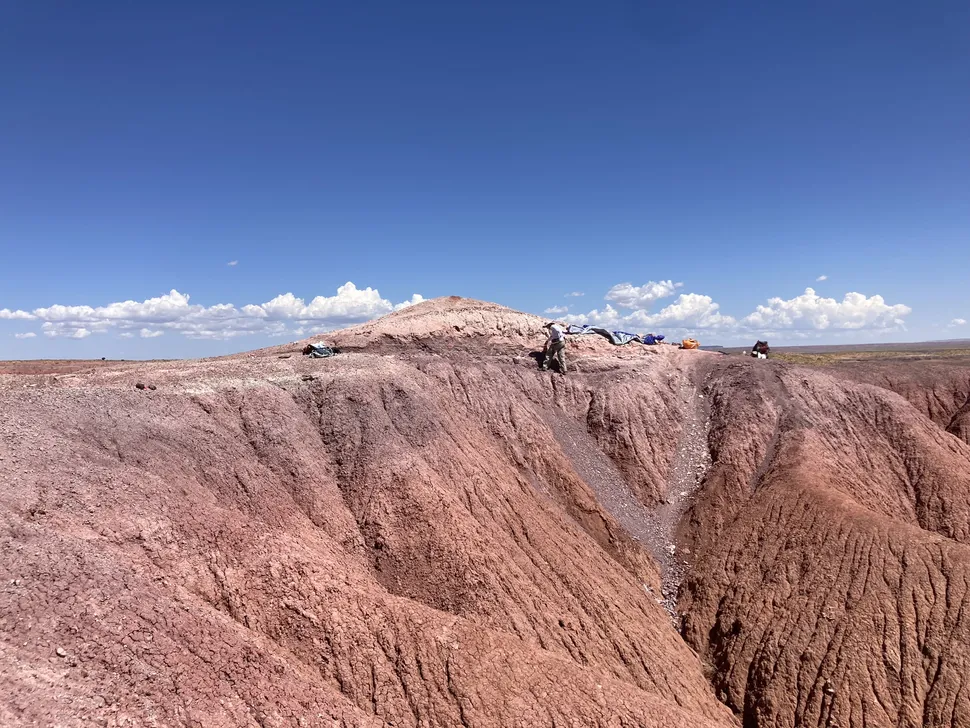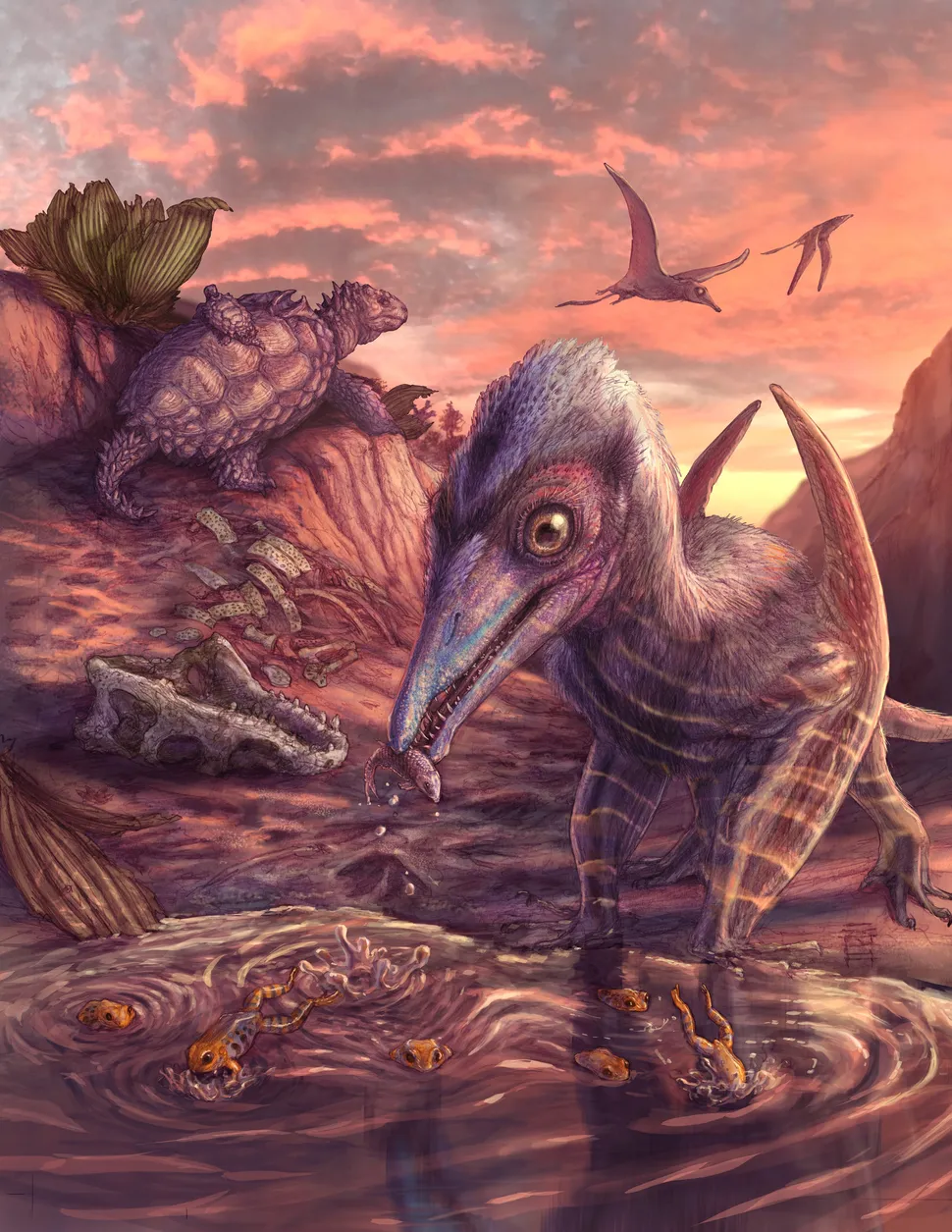A cache of Triassic fossils in Arizona has revealed Eotephradactylus mcintireae, or “ash-winged dawn goddess,” the oldest pterosaur ever discovered in North America.
Meet the “Ash-Winged Dawn Goddess”: Oldest Pterosaur Ever Found in North America Unearthed in Arizona
In a remarkable paleontological discovery, researchers have unearthed the oldest known pterosaur fossil ever found in North America — a 209-million-year-old creature now named Eotephradactylus mcintireae, or the “ash-winged dawn goddess.”
The fossil was discovered among a treasure trove of over 1,000 Triassic-era specimens in Petrified Forest National Park in Arizona. The species name honors both the ancient volcanic ash layer in which it was found and Eos, the Greek goddess of the dawn, symbolizing the creature’s place at the very beginning of pterosaur evolution.
Pterosaurs — often casually referred to as “pterodactyls” — were flying reptiles that ruled the skies during the age of dinosaurs. Though many of their later relatives boasted wingspans of up to 36 feet (11 meters), E. mcintireae was much more modest in size.

“This pterosaur would be the size of a small seagull and could have sat on your shoulder,” said lead author Ben Kligman, a paleontologist at the Smithsonian’s National Museum of Natural History, in an interview with Live Science.
But E. mcintireae was just one of many ancient animals preserved in the Triassic bonebed. Other fossils include early turtles, freshwater sharks, crocodile-like archosaurs, and giant amphibians. Together, they paint a vivid picture of a dynamic, diverse ecosystem that existed just before the end-Triassic mass extinction, approximately 201 million years ago — an event likely triggered by intense volcanic activity.
At the time, the area now known as northeastern Arizona lay just above the equator in the heart of the supercontinent Pangaea. The landscape featured river systems prone to flooding, which likely helped preserve these animals. A sudden flood may have swept over the ecosystem, entombing the remains of its inhabitants in ash and sediment.
Excavations began in 2011, but because many of the bones were extremely delicate, researchers opted to extract entire blocks of sediment for careful analysis in the lab. One of those volunteers, Suzanne McIntire, discovered the tiny jawbone of the pterosaur in 2013. The species name mcintireae honors her pivotal contribution.
Kligman, who joined the study in 2018, initially doubted the fossil was from a pterosaur — especially since none had ever been found in river-deposited sediment in North America before. But that changed the moment he examined the jaw.
“The distinctive teeth and jaw anatomy were unmistakably from a pterosaur,” he said. “I was most surprised that such a delicate jaw survived the churning of river gravel before fossilization. It suggests the site preserved fossils under unusually gentle conditions.”
The findings, published in the journal PNAS on July 7, mark a major milestone in understanding early pterosaur evolution and their ecosystem.
“Eotephradactylus lived in a community alongside frogs, turtle ancestors, and early lizard relatives — groups that are commonly seen together in the Jurassic and Cretaceous, but never before in a pre-extinction Triassic setting,” Kligman noted.
This ancient fossil bed not only offers a rare look at some of the earliest flying reptiles, but also provides a glimpse into a transitional ecosystem — a community at the dawn of new evolutionary chapters, just before a mass extinction reshaped the planet forever.
